Class 2A: Review of Programming in Python I#
The material for this lecture is best experienced as a Jupyter Notebook. Go to PrairieLearn Class Activity 2A and open the workspace in the question there to get access to a cloud-based version of this notebook.

Download the (logistics) Slides from today
Note: Some images may look slightly different than yours as the software gets more polished and icons/user interfaces change, but this should give you a general gist of the essential things.

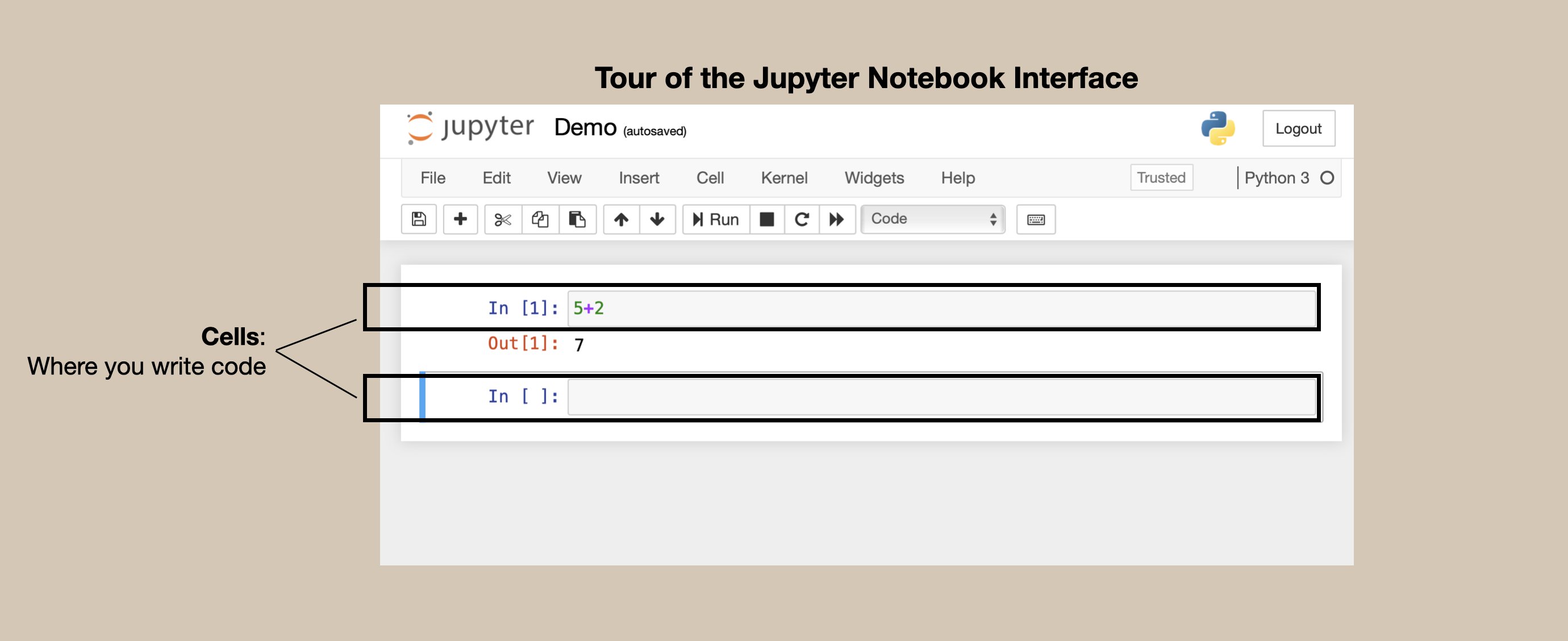
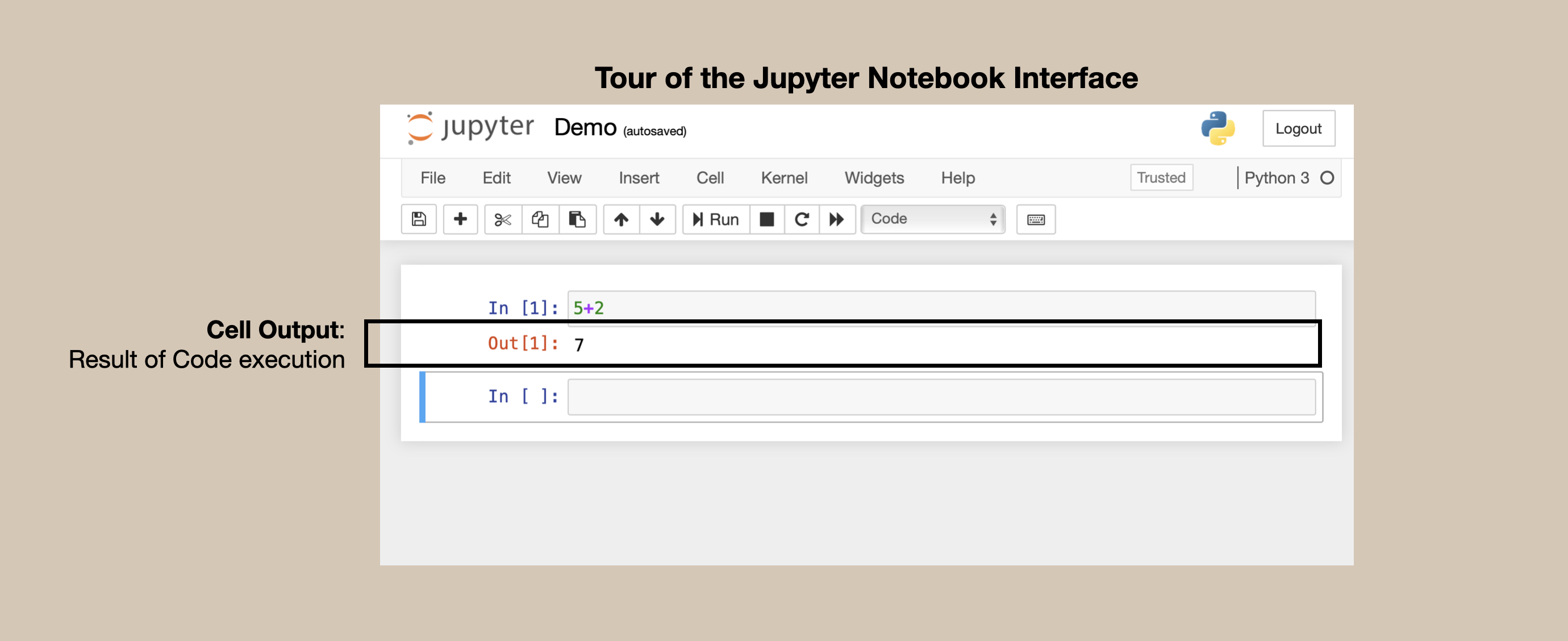
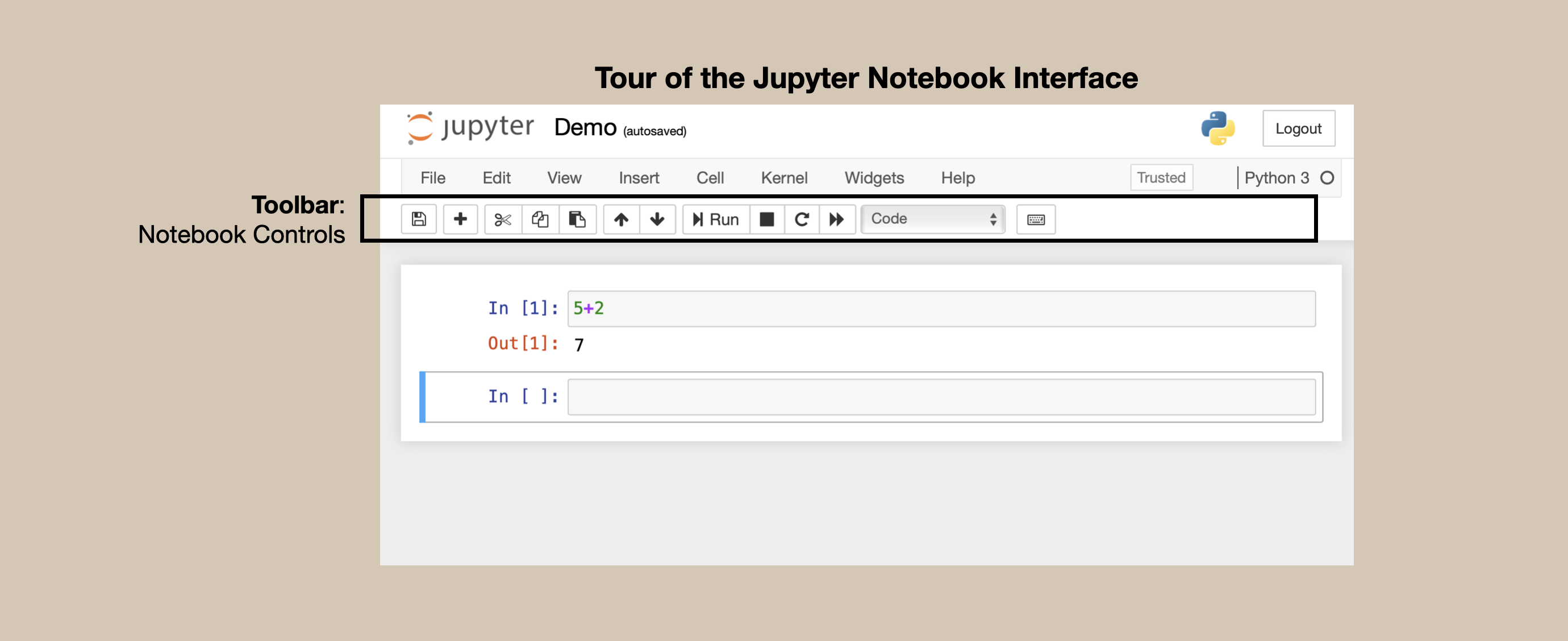
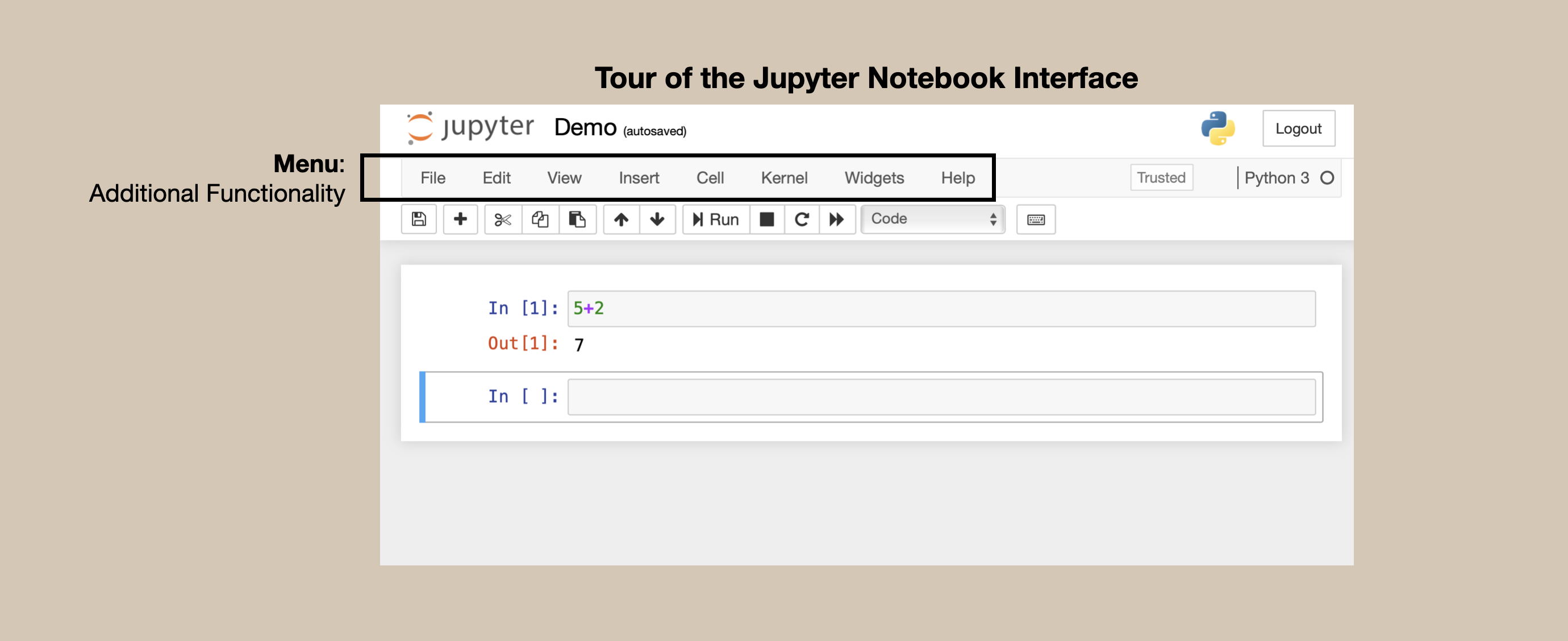
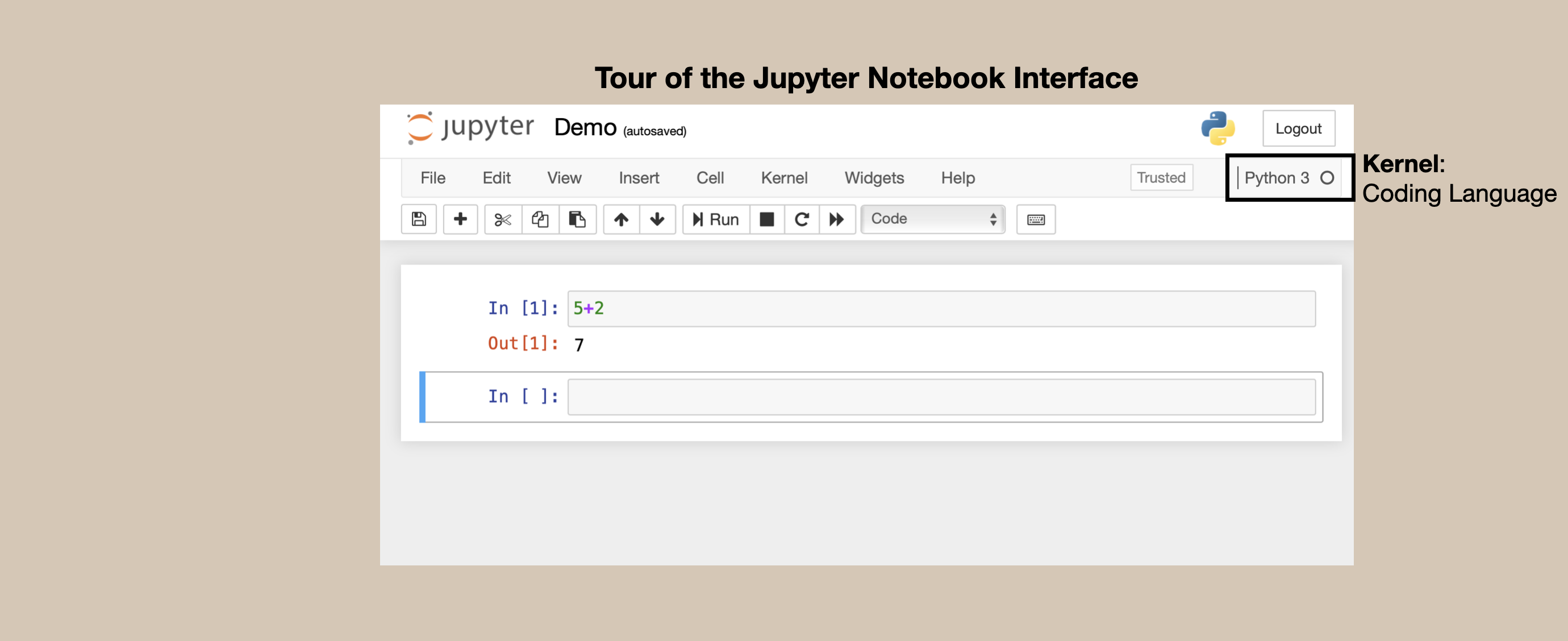
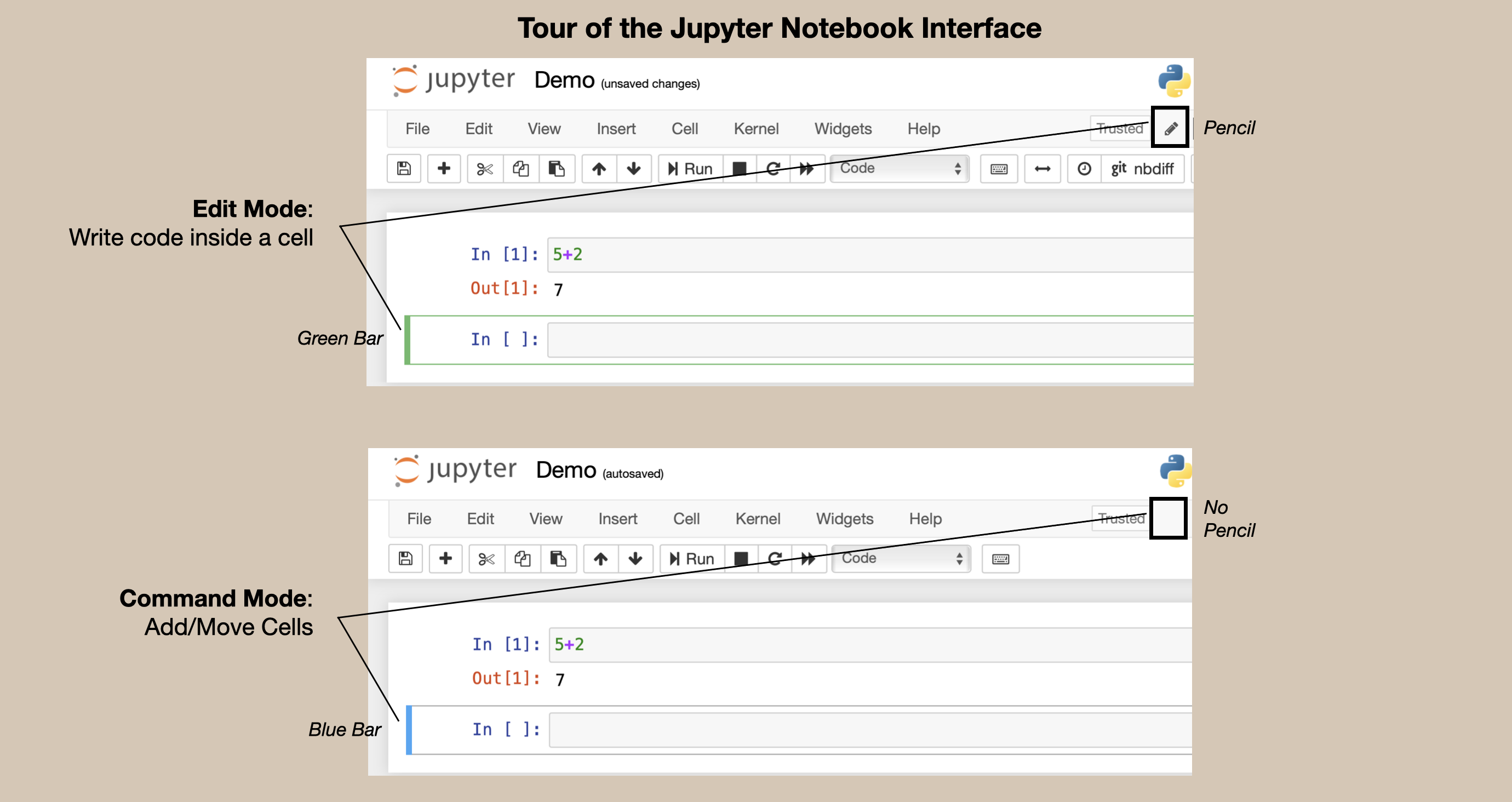
Part 1: Introduction (30 mins)#
Outline:#
Part 1: Review of Python
Basic datatypes
Lists and tuples
Break (5 min)
String methods
Dictionaries
Conditionals

Datatypes in Python#
Python has several data types available.
The diagram below from Geeks for Geeks shows a nice summary of how the datatypes are classified, and examples of each.
You’ll notice that some types are in a class of their own (dict, set, bool) whereas other ones are similar but have distinguishing features (list/tuple/str and int/float etc…).
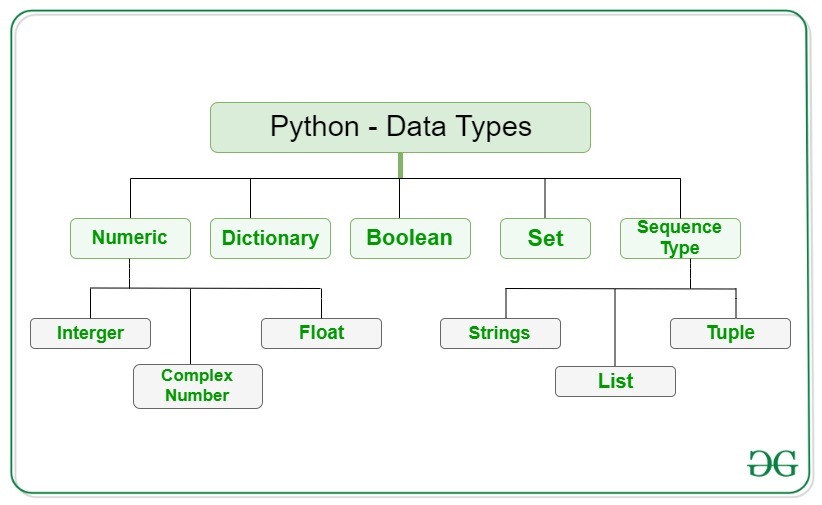
Common built-in Python data types#
English name |
Type name |
Description |
Example |
|---|---|---|---|
integer |
|
positive/negative whole numbers |
|
floating point number |
|
real number in decimal form |
|
boolean |
|
true or false |
|
string |
|
text |
|
list |
|
a collection of objects - mutable & ordered |
|
tuple |
|
a collection of objects - immutable & ordered |
|
dictionary |
|
mapping of key-value pairs |
|
none |
|
represents no value |
|
Variables and Values#
A value is a piece of data that a computer program works with such as a number or text.
There are different types of values:
42is an integer and"Hello!"is a string.A variable is a name that refers to a value.
In mathematics and statistics, we usually use variables names like \(x\) and \(y\).
In Python, we can use any word as a variable name (as long as it starts with a letter and is not a reserved word in Python such as
for,while,class,lambda, etc.).
And we use the assignment operator
=to assign a value to a variable.See the Python 3 documentation for a summary of the standard built-in Python datatypes.
See Think Python (Chapter 2) for a discussion of variables, expressions and statements in Python.
Numeric Types#
x = 42.5
type(x)
float
x = 5
print(x)
5
x=5
x-2
3
pi = 3.14159
print(pi)
3.14159
type(pi)
float
Arithmetic Operators#
The syntax for the arithmetic operators are:
Operator |
Description |
|---|---|
|
addition |
|
subtraction |
|
multiplication |
|
division |
|
exponentiation |
|
integer division |
|
modulo |
Let’s apply these operators to numeric types and observe the results.
1 + 2 + 3 + 4 + 5
15
0.1 + 0.2
0.30000000000000004
Tip
From Firas: This is floating point arithmetic. For an explanation of what’s going on, see this tutorial.
2 * 3.14159
6.28318
2**10
1024
type(2**10)
int
2.0**10
1024.0
int_2 = 2
float_2 = 2.0
float_2_again = 2.
107 / 2
53.5
107 // 2 # "integer division" - always rounds down
53
101 % 2 # "101 mod 2", or the remainder when 101 is divided by 2
1
Strings#
Text is stored as a type called a string.
We think of a string as a sequence of characters.
We write strings as characters enclosed with either:
single quotes, e.g.,
'Hello'double quotes, e.g.,
"Goodbye"triple single quotes, e.g.,
'''Yesterday'''triple double quotes, e.g.,
"""Tomorrow"""
my_name = "Firas Moosvi"
print(my_name)
Firas Moosvi
type(my_name)
str
course = 'CPSC 203'
print(course)
CPSC 203
type(course)
str
If the string contains a quotation or apostrophe, we can use double quotes or triple quotes to define the string.
sentence = "It's a rainy day."
print(sentence)
It's a rainy day.
type(sentence)
str
saying = '''They say:
"It's a rainy day!"'''
print(saying)
They say:
"It's a rainy day!"
Sequence Type#
This datatype contains three subtypes and serves as a good way to “hold/store stuff” - a container.
Each subtype has their own unique distinguishing features but they can all hold items of any type (and multiple types).
Below are the main differences between lists, tuples, and sets:
list: items are ordered, and can be edited, changed after insertion.set: items are unique, but not ordered. Items cannot be replaced or changed, but can be removed or added.tuple: items are ordered, but cannot be replaced or changed once created.
mylist = ['one','two','apples','three','apples',600.50, 50, 'banana']
set(mylist)
{50, 600.5, 'apples', 'banana', 'one', 'three', 'two'}
mytuple = ('one','two','apples', 600.5)
mytuple
('one', 'two', 'apples', 600.5)
mytuple +('blagreenck',)
('one', 'two', 'apples', 600.5, 'blagreenck')
Sets#
Another built-in Python data type is the
set, which stores an un-ordered list of unique items.
s = {2,3,5,11}
s
{2, 3, 5, 11}
{1,2,3} == {3,2,1}
True
[1,2,3] == [3,2,1]
False
s.add(2) # does nothing
s
{2, 3, 5, 11}
s[0]
---------------------------------------------------------------------------
TypeError Traceback (most recent call last)
Cell In[39], line 1
----> 1 s[0]
TypeError: 'set' object is not subscriptable
Above: throws an error because elements are not ordered.
Boolean#
The Boolean (
bool) type has two values:TrueandFalse.
the_truth = True
print(the_truth)
True
type(the_truth)
bool
lies = False
print(lies)
False
type(lies)
bool
Comparison Operators#
Compare objects using comparison operators. The result is a Boolean value.
Operator |
Description |
|---|---|
|
is |
|
is |
|
is |
|
is |
|
is |
|
is |
|
is |
2 < 3
True
"Data Science" != "Deep Learning"
True
2.0 == "two"
False
2 == 2.0
True
Note: we will discuss is next week.
Operators on Boolean values.
Operator |
Description |
|---|---|
|
are |
|
is at least one of |
|
is |
True and True
True
True and False
False
False or False
False
("Python 2" != "Python 3") and (2 <= 3)
True
not True
False
not not True
True
NoneType#
NoneTypeis its own type in Python.It only has one possible value,
NoneYou may have seen similar things in other languages, like
nullin Java, etc.
x = None
print(x)
None
type(x)
NoneType
bool(None)
False
Dictionaries#
Dictionaries are awesome! We’ll look at those in a lot more detail soon.
Break!#
Dictionaries (10 min)#
A dictionary is a mapping between key-values pairs.
house = {'bedrooms': 3,
'bathrooms': 2,
'city': 'Vancouver',
'price': 2499999,
'date_sold': (1,3,2015)}
condo = {'bedrooms' : 2,
'bathrooms': 1,
'city' : 'Burnaby',
'price' : 699999,
'date_sold': (27,8,2011)
}
house
{'bedrooms': 3,
'bathrooms': 2,
'city': 'Vancouver',
'price': 2499999,
'date_sold': (1, 3, 2015)}
We can access a specific field of a dictionary with square brackets:
house['price']
2499999
condo['city']
'Burnaby'
We can also edit dictionaries (they are mutable):
condo['price'] = 5 # price already in the dict
condo
{'bedrooms': 2,
'bathrooms': 1,
'city': 'Burnaby',
'price': 5,
'date_sold': (27, 8, 2011)}
condo['flooring'] = "wood"
condo
{'bedrooms': 2,
'bathrooms': 1,
'city': 'Burnaby',
'price': 5,
'date_sold': (27, 8, 2011),
'flooring': 'wood'}
We can delete fields entirely (though I rarely use this):
del condo["city"]
condo
{'bedrooms': 2,
'bathrooms': 1,
'price': 5,
'date_sold': (27, 8, 2011),
'flooring': 'wood'}
condo[5] = 443345
condo
{'bedrooms': 2,
'bathrooms': 1,
'price': 5,
'date_sold': (27, 8, 2011),
'flooring': 'wood',
5: 443345}
condo[(1,2,3)] = 777
condo
{'bedrooms': 2,
'bathrooms': 1,
'price': 5,
'date_sold': (27, 8, 2011),
'flooring': 'wood',
5: 443345,
(1, 2, 3): 777}
condo["nothere"]
---------------------------------------------------------------------------
KeyError Traceback (most recent call last)
/var/folders/64/bfv2dn992m17r4ztvfrt93rh0000gn/T/ipykernel_6265/2495379980.py in <module>
----> 1 condo["nothere"]
KeyError: 'nothere'
A sometimes useful trick about default values:
condo["bedrooms"]
2
is shorthand for
condo.get("bedrooms")
2
type(condo.get('nothere'))
NoneType
With this syntax you can also use default values:
condo.get("bedrooms", "unknown")
2
condo.get("fireplaces", "FREEZER")
'FREEZER'
A common operation is finding the maximum dictionary key by value.
There are a few ways to do this, see this StackOverflow page.
One way of doing it:
max(word_lengths, key=word_lengths.get)
We saw word_lengths.get above - it is saying that we should call this function on each key of the dict to decide how to sort.
Indexing Sequences (Lists and Tuples) (20 min)#
Lists and tuples allow us to store multiple things (“elements”) in a single object.
The elements are ordered.
We can access values inside a list, tuple, or string using the bracket syntax.
Python uses zero-based indexing, which means the first element of the list is in position 0, not position 1.
my_list = [1, 2, "THREE", 4, 0.5]
print(my_list)
[1, 2, 'THREE', 4, 0.5]
type(my_list)
list
You can get the length of the list with len:
len(my_list)
5
today = (1, 2, "THREE", 4, 0.5)
print(today)
(1, 2, 'THREE', 4, 0.5)
type(today)
tuple
len(today)
5
my_list
[1, 2, 'THREE', 4, 0.5]
my_list[0]
1
my_list[4]
0.5
my_list[5]
---------------------------------------------------------------------------
IndexError Traceback (most recent call last)
Cell In[98], line 1
----> 1 my_list[5]
IndexError: list index out of range
today[4]
0.5
We can use negative indices to count backwards from the end of the list.
my_list
[1, 2, 'THREE', 4, 0.5]
my_list[-1]
0.5
We use the colon : to access a subsequence. This is called “slicing”.
my_list[1:4]
[2, 'THREE', 4]
Above: note that the start is inclusive and the end is exclusive.
So
my_list[1:3]fetches elements 1 and 2, but not 3.In other words, it gets the 2nd and 3rd elements in the list.
We can omit the start or end:
my_list[:3]
[1, 2, 'THREE']
my_list[3:]
[4, 0.5]
my_list[:] # *almost* same as my_list - more details next week
[1, 2, 'THREE', 4, 0.5]
Strings behave the same as lists and tuples when it comes to indexing and slicing.
alphabet = "abcdefghijklmnopqrstuvwxyz"
alphabet[0]
'a'
alphabet[-1]
'z'
alphabet[-3]
'x'
alphabet[:5]
'abcde'
alphabet[12:20]
'mnopqrst'
List Methods#
A list is an object and it has methods for interacting with its data.
For example,
list.append(item)appends an item to the end of the list.See the documentation for more list methods.
primes = [2,3,5,7,11]
primes
[2, 3, 5, 7, 11]
len(primes)
5
primes.append(13)
primes
[2, 3, 5, 7, 11, 13]
len(primes)
6
max(primes)
13
min(primes)
2
sum(primes)
41
w =[1,2,3] + ["Hello", 7]
w
[1, 2, 3, 'Hello', 7]
type(w)
list
Mutable vs. Immutable Types#
Strings and tuples are immutable types which means they cannot be modified.
Lists are mutable and we can assign new values for its various entries.
This is the main difference between lists and tuples.
names_list = ["Indiana","Fang","Linsey"]
names_list
names_list[0] = "Cool guy"
names_list
names_tuple = ("Indiana","Fang","Linsey")
names_tuple
names_tuple[0] = "Not cool guy"
Same goes for strings. Once defined we cannot modifiy the characters of the string.
my_name = "Firas"
my_name[-1] = 'q'
---------------------------------------------------------------------------
TypeError Traceback (most recent call last)
Cell In[128], line 1
----> 1 my_name[-1] = 'q'
TypeError: 'str' object does not support item assignment
x = ([1,2,3],5)
x[1] = 7
x
x[0][1] = 4
x
String Methods (5 min)#
There are various useful string methods in Python.
all_caps = "HOW ARE YOU TODAY?"
print(all_caps)
HOW ARE YOU TODAY?
new_str = all_caps.lower()
new_str
'how are you today?'
Note that the method lower doesn’t change the original string but rather returns a new one.
all_caps
'HOW ARE YOU TODAY?'
There are many string methods. Check out the documentation.
all_caps.split()
['HOW', 'ARE', 'YOU', 'TODAY?']
all_caps.count("O")
3
One can explicitly cast a string to a list:
caps_list = list(all_caps)
caps_list
['H',
'O',
'W',
' ',
'A',
'R',
'E',
' ',
'Y',
'O',
'U',
' ',
'T',
'O',
'D',
'A',
'Y',
'?']
len(all_caps)
18
len(caps_list)
18
String formatting#
Python has a really awesome way of formatting strings by “filling in the blanks” and formatting them nicely.
There are a few ways of doing this, but f-strings are what I would recommend.
myname = "Firas"
age = 5
new = f"Hello, my name is {myname}. I am {age} years old."
print(new)
Hello, my name is Firas. I am 5 years old.
Empties#
lst = list() # empty list
lst
[]
lst = [] # empty list
lst
[]
tup = tuple() # empty tuple
tup
()
tup = () # empty tuple
tup
()
dic = dict() # empty dict
dic
{}
dic = {} # empty dict
dic
{}
st = set() # emtpy set
st
set()
st = {} # NOT an empty set!
type(st)
dict
st = {1}
type(st)
set
Conditionals (10 min)#
Conditional statements allow us to write programs where only certain blocks of code are executed depending on the state of the program.
Let’s look at some examples and take note of the keywords, syntax and indentation.
Check out the Python documentation and Think Python (Chapter 5) for more information about conditional execution.
name = input("What's your name?")
if name.lower() == 'mike':
print("That's my name too!")
elif name.lower() == 'santa':
print("That's a funny name.")
elif name.lower() == 'firas':
print("That's a great name")
else:
print(f"Hello {name}! That's a cool name.")
print('Nice to meet you!')
That's a great name
The main points to notice:
Use keywords
if,elifandelseThe colon
:ends each conditional expressionIndentation (by 4 empty space) defines code blocks
In an
ifstatement, the first block whose conditional statement returnsTrueis executed and the program exits theifblockifstatements don’t necessarily needeliforelseeliflets us check several conditionselselets us evaluate a default block if all other conditions areFalsethe end of the entire
ifstatement is where the indentation returns to the same level as the firstifkeyword
If statements can also be nested inside of one another:
name = input("What's your name?")
if name.lower() == 'mike':
print("That's my name too!")
elif name.lower() == 'santa':
print("That's a funny name.")
else:
print("Hello {0}! That's a cool name.".format(name))
if name.lower().startswith("super"):
print("Do you have superpowers?")
print('Nice to meet you!')
What's your name?Jack
Hello Jack! That's a cool name.
Nice to meet you!
Inline if/else#
words = ["the", "list", "of", "words"]
x = "long list" if len(words) > 10 else "short list"
x
if len(words) > 10:
x = "long list"
else:
x = "short list"
x
Preview: Next Class#
Next class we will look at loops, functions, and error handling. After that, we’ll be in business for the rest of the course!
## RISE settings
from IPython.display import IFrame
from traitlets.config.manager import BaseJSONConfigManager
from pathlib import Path
path = Path.home() / ".jupyter" / "nbconfig"
cm = BaseJSONConfigManager(config_dir=str(path))
tmp = cm.update(
"rise",
{
"theme": "sky", # blood is dark, nice
"transition": "fade",
"start_slideshow_at": "selected",
"autolaunch": False,
"width": "100%",
"height": "100%",
"header": "",
"footer": "",
"scroll": True,
"enable_chalkboard": True,
"slideNumber": True,
"center": False,
"controlsLayout": "edges",
"slideNumber": True,
"hash": True,
},
)
